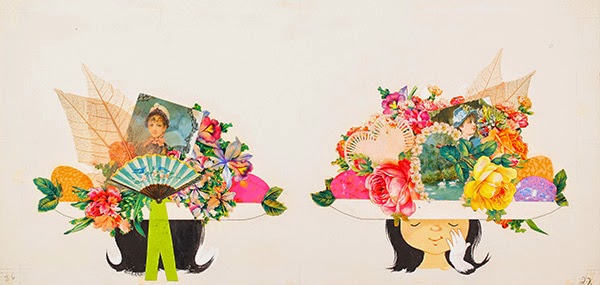According to philosopher Zed Adams, that question wasn't even considered until the 1600s. The perception of color is a relatively new phenomenon, one whose history Adams presented in a talk (and promotion for his forthcoming book, The Genealogy of Color) at Machine Project in Los Angeles.
Interested in how philosophical questions become philosophical questions, Adams discovered that before the 1600s, it was believed that people experienced color in the same way. Then came a shift: a renewed interest in optics led to the discovery that color is but light reflecting off a surface; that light doesn't just make seeing color possible- it produces color. Since each pair of eyes processes light differently, color, therefore, must be a subjective experience.
Many other corollary discoveries came about from the 1600s on, and, according to Adams, five important ones in particular:
1. Light has a speed.
2. Different color experiences are caused by different sources of light.
3. There are lights that we can't see, like infrared and ultraviolet.
4. Other animals can colors that we can't.
5. Color blindness exists.
It's easy to take for granted these long-accepted facts, but it was revolutionary for thinkers like Isaac Newton and Rene Descartes. Newton believed that seeing color was analogous to hearing sound: pitch was believed to come in seven varieties, so why not color? Descartes didn't necessarily think about variation in color perception so much as the fact that our own ideas about color don't resemble their external causes (the blue chair is not produced by a blue-colored light).
That isn't to say that color wasn't thought about before the 1600s; the ancient Greeks named their colors according to how much light was emitted rather than their hue. (The entry for "colour" in the Cambridge Dictionary of Classical Civilization gives a precise account of this.) The Greek term ochron for example, included a variety of colors - red, yellow, green - because they all have a similar lightness.
.jpg) |
| Sketch from Rene Descartes, De Homine Figuris, ca. 1633 (Getty Images) |
+Claude+Boutet,+1708+.jpg) |
| Color circles from Traité de la peinture en mignature, possibly attributed to Claude Boutet, 1708 |
Adams' talk, while brimming with food for thought, was at times tiresome: using dates as a device for situating events ("color blindness was first considered in the late 1700s"; "infrared was discovered in the 1800s") is better left for reading material. Then again, he did make the historical focus of his talk clear in its title, "The History of Questioning Color Perception."
And indeed, tying together this history nicely, he concluded with an anecdote: In the 1800s, a man was surprised by the black suit his future son-in-law was wearing as it was the day before his wedding. Turns out it wasn't black; he was just color blind.





